How to find nests
Finding the nests of wild birds is a rewarding part of nest monitoring. The majority of Nesting Neighbours records are from nest boxes, so it is important you know how to safely monitor a nest box, but there are many other nests to be found. Whether checking a nest box or an open nest, make sure you have read and understood the Code of Conduct.
Finding methods
A nest can be found either by watching an adult bird back to the nest or by searching in suitable habitats.
Watching back
You can learn a lot by carefully watching a bird's behaviour. Have you seen a bird carrying nesting material or food into foliage? Take the time to find a place to watch the bird's activity without alerting it to the fact you are paying attention and once you have managed to pinpoint a location it keeps returning to, carefully approach and see if you can find the nest. It can take more than one attempt and may require patience, but it is a skill worth practising!
Searching
This is the method of looking in likely nest locations to see if you can discover a nest. It helps to learn about the habitats you may expect to find a species nesting in so you know where to get started. Evergreens, or areas of dense vegetation, are likely places where birds will place their nests, particularly Robin, Blackbird or Woodpigeon, so are good places to start searching. It is much easier to search earlier in the year when the leaves have yet to unfurl, even though there may be less activity it will be easier to spot nests. The winter months ahead of the breeding season is a great time to look for old nests from the past year to get a good idea where you are likely to find nests in the spring.
Habitats
Understanding the habitats birds use makes finding nests much easier, this could be through research but also time spent observing and gaining experience. Some nests can be tricky to access. Nests in thick bramble, for example, may be inaccessible, so searching for nests in areas where thick bramble is the only nesting habitat available may not be a very fruitful exercise. Be very careful when attempting to record the contents of nests in precarious positions, especially in trees and on cliffs or quarries. Fieldworkers are asked to note that they should not put themselves in a position which could place them, or others, in danger. See BTO’s volunteer Health and Safety guidance for more information on accessing nests.
Time of day
The best time to search for and record nests is usually early mornings. This is when the young are hungry after a night with no food and the parents are off the nest, busy collecting food to feed the young and themselves, before settling back on the eggs or brooding. During the middle of the day there is a distinct lack of breeding or feeding activity, but this may increase again towards the end of the day, giving another opportunity to look out for adult nesting activities.
Identifying the nest
When you do experience the excitement of finding a nest, the next step is to identify which species the nest belongs to. If you have been using the watching back technique it should be fairly obvious as you will have seen the adult bird (though make sure you have actually located the correct nest and not another nearby nester!). The location, structure and materials of the nest can help with identification along with what the eggs and young look like. Here are some tips on finding and identifying common open-nesting species.
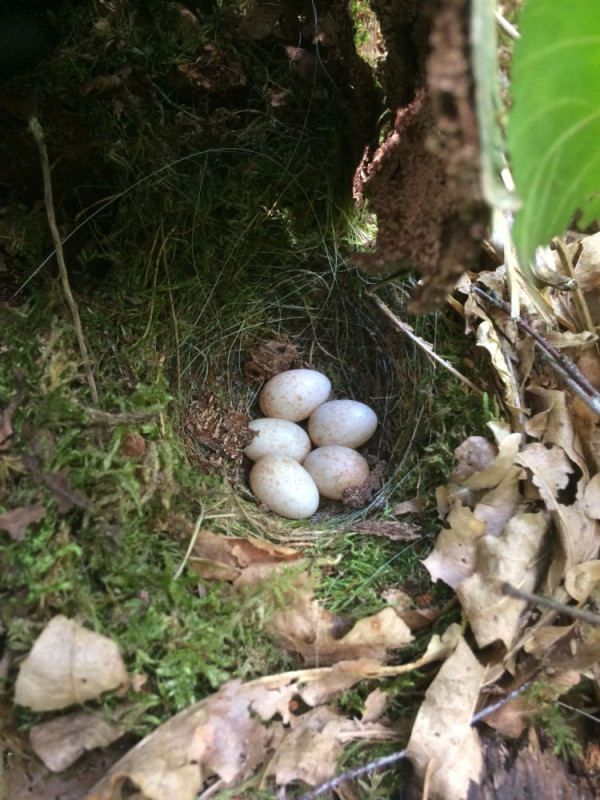
Robin
Robin nests can be tricky to find as they can be in a variety of habitats and anywhere between ground level and about 2 m high. Moss and dead leaves in unusual locations such as hanging from ivy or tucked in a grass tussock can give away the nests location. Robin nests are reported in quite urban locations such as garden sheds and even car engines as well as much more rural habitats.
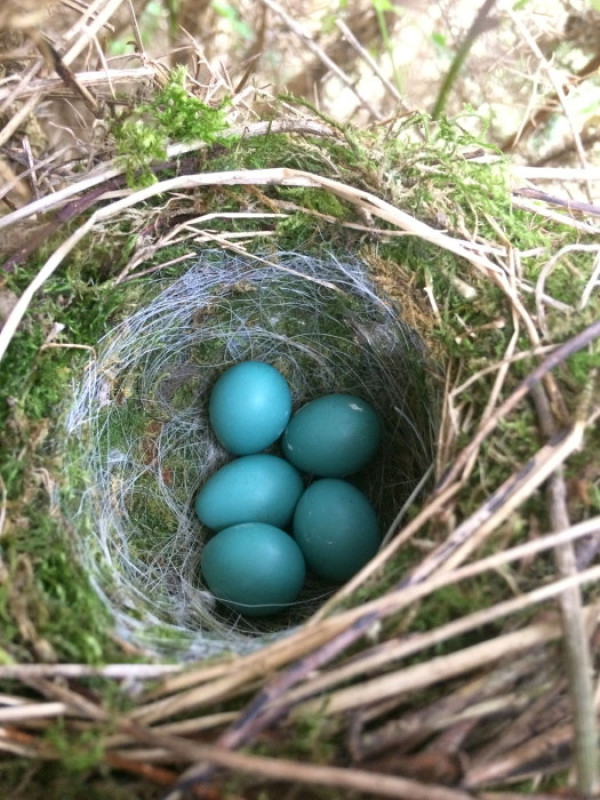
Dunnock
Dunnock nests are often found in larger gardens and parks with hedges and in farmland hedgerows. The nests are cups made of moss and grass on a foundation of sticks and the eggs are bright blue in colour. They will frequently return to the same nesting site in successive years so once you find a Dunnock nest it is good to search in the same location in following years.
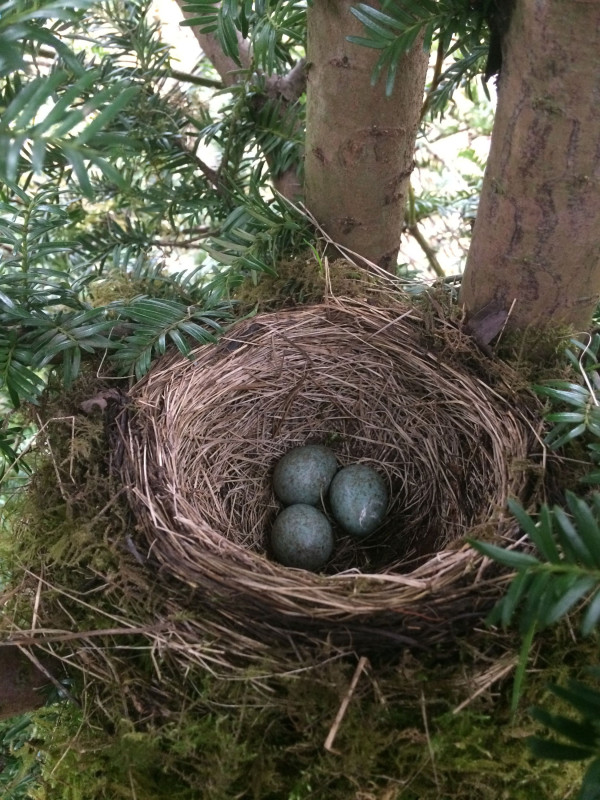
Blackbird
Found in the forks of tree branches and tucked in dense foliage, Blackbirds will build larger cups shaped nests made of grass and leaves. The eggs are a green-blue with mottled brown specks. An adult warning call can give away that a nest is nearby, they are also a good species for watching back to the nest.
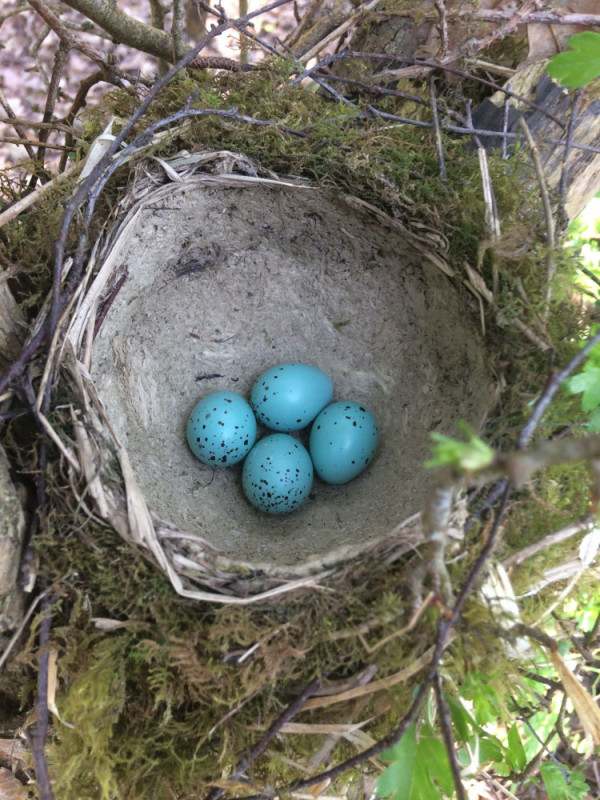
Song Thrush
Song Thrush are very similar to Blackbirds, and nest in similar locations. The main difference is that the inside of the nest is lined with a smooth mud cup.
How to check a nest box
Please read the Code of Conduct before following the steps below.
-
If you are able to watch the adults leave the box, this is the most opportune time to carry out a nest box check.
-
Approach the box carefully without trampling the surrounding vegetation.
-
Stand to the side of the box and give a tap and allow a few seconds for a bird to emerge. This will give the bird a chance to leave the box without you blocking the entrance hole.
-
Steadily and carefully open the lid giving space for a bird to fly out of the top.
-
Once open, look inside. If an adult is sitting tight on the nest, close the lid carefully and return at a later time. You can make a note that an adult was sitting on the box.
-
If no adult is present make a note of the stage of the nest building or the number of eggs or the number of young in the nest. You can also record the stage of growth of the young.
-
Carefully close the lid and ensure it is securely fastened.
-
Leave the way you came, causing minimal trampling to the vegetation.
What if I can't or don't want to look in the nest box?
If you are unable to look inside your nest box, or do not wish to do so, you can still tell a lot about what is going on just by watching from a distance. You will need to be close enough to see the bird's activity at the nest, but not so close the bird is put off from returning to the nest. You may even be able to watch from the comfort of your own home with the aid of a pair of binoculars. There are several signs of breeding to look out for:
-
Birds flying repeatedly to and from the nest
-
Birds carrying nesting material to the nest
-
Birds carrying food to the nest
-
Chicks calling from the nest
-
Young poking their heads out of the box/nest
-
Young leaving the box/nest when they are ready to fledge

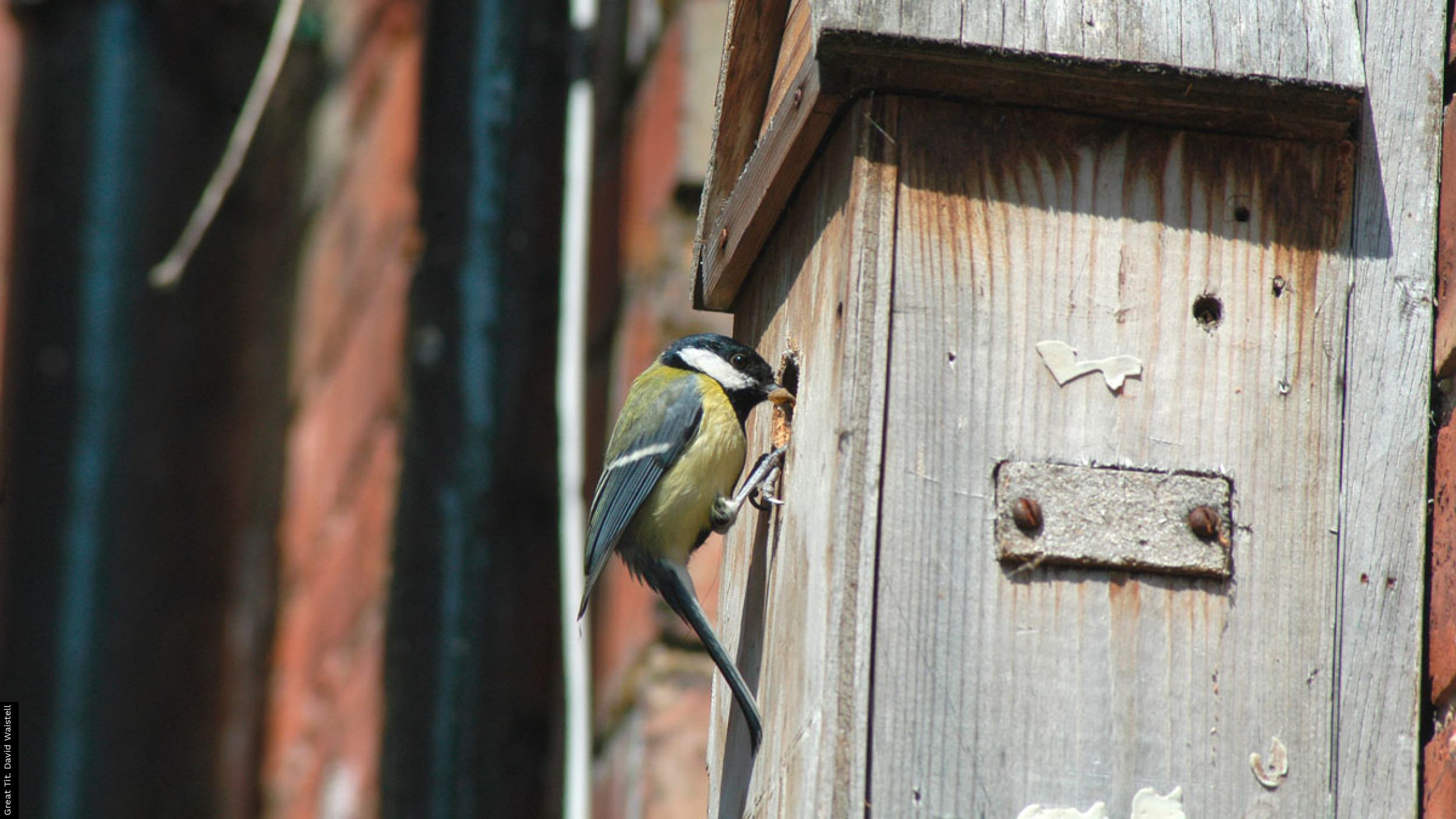




Share this page